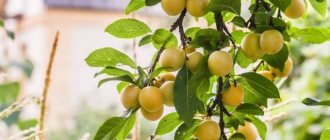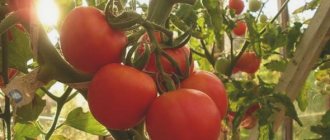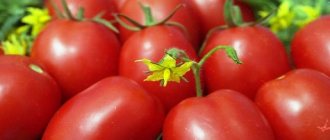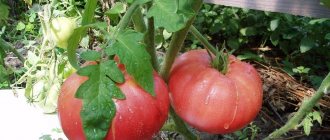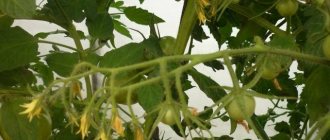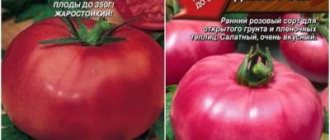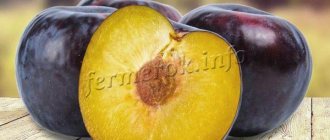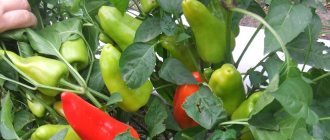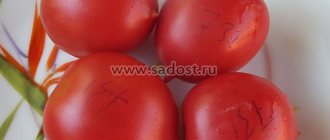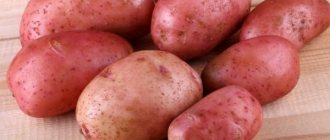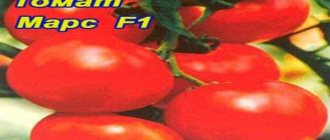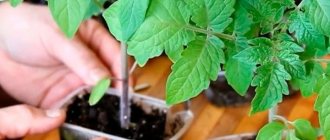How the Cherry Cherry variety was developed
The cherry plum variety July Rose was bred by breeders of the Institute of Plant Growing in Krymsk, Krasnodar Territory. The variety was obtained by free pollination of the Kuban Comet plum, created in the same laboratory. The variety differs from its ancestor in the earlier period of fruit ripening. In 1999, the July Rose was included in the state register and zoned in the North Caucasus region. The hybrid type of cherry plum, created from the seeds of the Kuban Comet, is an achievement in floriculture.
Main indicators of culture
A description of the fruit crop of the July Comet variety will help you decide whether it is worth planting in a private garden or industrial plantations. A detailed description of the plant is also required to become familiar with the methods of caring for it.
Tree
The trees grow to medium height, with a smooth trunk and medium dense bushes. The shoots are horizontal, their diameter is 25 mm. The fruits ripen on overgrowing short bouquet branches. Their life span lasts about 2-3 years. The tree brings an annual harvest; up to 10 kg of fruit can be collected from an 8-year-old plant. The variety is winter-hardy, resistant to dry periods. Cherry plum resists diseases and harmful insects. The first fruits appear in the 3rd year after planting. The cherry plum variety does not pollinate itself.
Fetus
The tree of the July Rose variety bears ovoid fruits weighing up to 30 grams, with a waxy coating. The skin color is purple, with a pinkish undertone. The pulp has a dense structure, low juiciness, fibrous with a sweet and sour taste. The variety received a rating of 4.4 points from tasters.
The stone is small in size, easily separated, and the flesh does not darken quickly when exposed to air. Cherry plum can be consumed fresh or prepared for the winter. Cherry plum is suitable for making preserves, compotes, jams, and dried fruits. You can also decorate desserts with fruits and add them to baked goods.
Harvesting
Plum is a capricious crop; if planted and cared for incorrectly, it may not bear fruit at all. But if the place is chosen correctly and proper care is provided, then the Peach tree produces its first fruits in the fifth year of life, maximum in the seventh. The largest harvest should be expected by the age of 15 (50 kg per tree)
. The variety has a universal purpose: for the fresh market, personal consumption, winter preparations. Plums make delicious dried fruits, and they are also used to make wine and liqueurs.
The harvest is harvested in dry weather. For transportation and storage, fruits with dense pulp are selected and placed in boxes in one layer, being careful not to damage the wax coating. For immediate processing and fresh consumption, fully ripened fruits with juicy and aromatic pulp are collected.
Just recently, growing cherry plum in places with a changeable climate seemed just a myth, but now it is not only possible, but also necessary. Has the highest frost resistance
variety Seedling Rocket, and
the largest fruits
are cherry plum Tent.
Early, ready for harvesting at the end of July - beginning of August: Vetraz, Monomakh, Nesmeyana. Medium, ripening by the beginning - mid-August: Kuban Comet, Chuk, Anastasia, Sarmatka, Karminnaya Zhukova, Apricot, Late Comet, Peach. Experienced gardeners recommend growing
the varieties Zlato Scythians, Skoroplodnaya, Mara and Kolonovidnaya in the Moscow region. A description of the best varieties of cherry plum or Russian plum can be found below.
The taste of many fruits depends on the size of the fruit, the same applies to cherry plum. Large-fruited varieties are very popular, the best of them are considered
:
Tent
The tree is small in stature, quickly reaches the required height and begins to bear fruit after 4-5 years of life. The crown is round, dense, and grows downward. The fruits are large in size, their weight can reach 40 grams
. The pulp is sweet and sour, yellow in color; such fruits can be eaten fresh and used for preparations. The average yield of one tree is 35 kilograms
. The ripening period is early, frost resistance is high, in addition to winter cold, the buds also tolerate spring frosts. The disadvantages include self-sterility and average resistance to lack of moisture.
Found
The variety has a medium ripening period, the tree grows to medium size, the crown is dense, round, slightly flat. Fruit weight reaches 35-37 grams
, the flesh is rich yellow in color, the taste is pleasant, refreshing, sweet and sour. A tree can bear its first harvest as early as 3 years old, and after some time it will be possible to collect up to 40 kilograms of delicious fruits from one tree. The variety tolerates both winter and spring temperature changes well, and its drought resistance is average. Pollination occurs with the help of other varieties that bloom during the same period as Naydena.
Huck
A variety that bears fruit in medium terms. The tree grows very quickly, but at the same time reaches an average height, the crown is dense, slightly drooping, rounded. The fruits weigh up to 35 grams, the color of the pulp is dark yellow, the taste is sweet and sour, the seed is difficult to separate
. The purpose of this cherry plum allows it to be consumed in any form. The winter hardiness of the variety is good, the same applies to the yield, which pleases with its high stability. Pollination is cross-pollination with other trees growing near the cherry plum.
Monomakh
The fruits of this variety are smaller in size than other varieties and weigh only 25-30 grams
, but the distinctive feature will be excellent taste, juiciness and easy pitting. Also, this cherry plum has an unusual shape, reminiscent of Monomakh’s hat and a rich, purple skin color. The harvest ripens early, the tree bears fruit annually and in large quantities.
Characteristics of cherry plum July rose
The characteristic features of the cherry plum variety July Rose are as follows:
- the fruits ripen after the 20th of June, the tree bears fruit until July 10-15;
- high resistance to pests and diseases;
- flowering occurs on April 1-15;
- with proper care, the tree bears fruit in the 3rd year.
The variety is excellent for growing on industrial plantations and in private gardens. The trees bear a lot of fruit and do not require daily care, which is beneficial for summer residents .
Drought and low temperature resistance
The tree survives drought normally, but not regularly. The variety is moisture-loving, but with an excess of water, aphid damage occurs and diseases develop. The July cherry plum variety can withstand frosts down to -36 degrees. The plant also withstands adverse weather conditions such as strong winds, rain, and snow.
See also
How to properly dry plums at home with your own hands, TOP ways to make prunesRead
Susceptibility of the cherry plum variety to diseases and parasites
July cherry plum is famous for its powerful protective properties, it practically does not get sick, and is rarely attacked by harmful beetles. With proper care and preventive pruning, the plant will live up to 15 years.
Tree pollinators
The July cherry plum tree should be planted next to or planted next to varieties that flower at the same time. These include the Traveler and Pramen cultures.
Flowering and fruiting of cherry plum
Pollen occurs at the beginning of April. The fruits ripen by the end of June. The harvest is stable, but it is recommended to collect it immediately. The cherry plum fruits do not hold tightly to the stalks and can fall off when there is wind gusts.
How to collect and store fruits
The cherry plum harvest should be picked 2-3 days after the fruit ripens. They will become sweeter and juicier. Transportation is possible, but only if it is carried out correctly. The harvest should be stored for 1-1.5 weeks unopened. If you place plums in a wooden box and keep them in a cool, dark room, they will stay there for up to 1 month. It is important to sort through the fruits so that there are no rotten or damaged ones among them.
general information
Initially, cherry plum was distributed in Iran, Asia Minor and Transcaucasia, Moldova, and Ukraine. Today it can be found not only in the Krasnodar region, but also in the Rostov, Kursk, Voronezh and Bryansk regions. She loves sunlight, is not afraid of dry weather, and prefers neutral soil. The height of an adult plant can reach 13 m, but cultivated varieties are not particularly tall. A tree for 45 years can delight its owners with juicy fruits, although some live up to 60.
Reproduction occurs in different ways:
The fruits are tasty and healthy; they can be eaten if you have diabetes, since their sugar content is low. Green cherry plum is used in the food industry to produce citric acid; its content reaches 14%, so production is profitable. Sweet and sour fruits contain sugar, organic acids, vitamins, and pectin. They are used for canning, making marshmallows, and eaten fresh.
Unripe cherry plum is used as a seasoning in the Caucasus.
Cherry plum bears fruit in its third year of life. The shape of the fruit can be elongated, flattened or round, with a small groove. The weight of wild ones is 3-6 grams, cultivated ones reach 60 grams. The color of the fruit varies - yellow-green, red, purple, and black in some varieties. They have a slight white waxy coating.
Advantages and disadvantages of wood
The July variety of cherry plum has many advantages. There are also some disadvantages that you should familiarize yourself with.
| pros | Minuses |
| The fruits ripen early | Fruits ripen unevenly |
| The harvest is stable and plentiful | Resistance to dry periods is average |
| The variety takes root well almost anywhere | |
| High resistance to cold and disease | |
| The fruits are tasty and large |
Planting a plant on the site
Cherry plums are usually planted as seedlings. This is the most popular method of breeding the variety. It is better to buy planting material from trusted sellers on the market or in nurseries. If you take a seedling online or from unfamiliar sellers, you may stumble upon wild seedlings or the wrong variety. It should be free of any damage or signs of disease.
The structure of the trunk is dense, its height is about 10 centimeters. Keep the seedling in the basement or dig it into the ground with a semi-horizontal slope. The hole is dug in advance, 50-60 centimeters deep and 80 cm wide. The groundwater table must extend at least 1.5 meters above the surface. Choose a place well lit by the sun, where the wind does not blow. You can plant bushes under the tree so that the fruits are not damaged when they fall.
When to carry out planting work
In the middle and northern zones, it is better to plant cherry plums in March, before the sap flows. If you plant a plant in the fall, it will not have time to get stronger before the cold weather, and roots will not form. In the south, you can do planting work in October if the air temperature remains stable at +10.
Step-by-step disembarkation instructions
Planting work is carried out in early spring. The tree is planted according to the instructions below.
- The seedling is dug up or taken out of the basement, and the rhizome is placed in water for 1-2 hours. Add Heteroauxin and Epin to it. Substances stimulate growth and root formation.
- Remove part of the soil from the previously prepared hole so that the roots fit.
- Place a mound of soil in the middle. At a distance of 10 cm from the center, drive in a wooden stick 100 cm high.
- Lower the planting material to a hill so that the neck is located at the top and the root system is evenly spread along the slopes.
- Cover the rhizome with soil in layers, compacting it.
- Tie the tree to the stake with twine in the shape of a figure eight.
- Form a tree trunk circle around the seedling.
- Water generously so that the soil adheres well to the rhizome.
See also
Description and characteristics of plum variety Alyonushka, cultivation and care, pollinatorsRead
After 2 hours, loosen the trunk circle of the young tree and cover it with a mulch layer. For this purpose, compost, rotted sawdust, and hay are used.
Forum statistics
208683 Messages in 1636 Topics from 5641 Users. Last user: Cerberus Last message: “Khanka is a raisin table…” ( Today at 01:29:28) Latest messages on the forum.
Now on the forum
31 Guests, 4 Users
Users in the last 15 minutes: Nikolay Mikhailovich, sergei, Victor B, Evgeniy52 [Blocked] [Section Moderator] [Forum Moderator]
Maximum online today: 112 . All-time maximum online: 2758 (28 July 2021, 17:22:51)
Users who visited the forum in the last 24 hours
Total: 317
(Visible: 316, Hidden: 1) 1963, Nikolai Mikhailovich, sergei, Victor B, Evgeniy52, 77volt, hanter64, Tatyana B, kosmos, slavalimon, Alexander Vl., Mikhail77, skier, rivaN, y_fed, Kazak, Igor Sergeevich, Victor55 , Andrey15, OlgaOs, Ilya 77, DorontsovPeter, Chapay, Buba, Alexander Mikhno, Alexander K, dralexk1, alexsandr, Amber7394, SANYCH, Pioneer, DimaRostov, Dmitry 77, Nikolay Lipunov, Verona, DED2, MaxL, nicson7, Vasily V., Kenig, Alexander Taganrog, VitalySD, Dmitry-Kozadoev, Realist, Alexey Deminov, Elektronik_t, Galinka, Skif, DSW, Natasha, Alexey Agryzkov, Taker, Kadyrov, bonami, antar, Sergey 1965, Andrey Gladilin, SvetlanaBondareva, tolya, Nadezhda Grig, Naumov Igor, vlad51, Igor F., kvg, Pavel 64, Volgar, Capricorn, Roman Fedorovich, igor222, max2008-01, Iv Iv, Vika, Andrey Lis, Evgeniy30, lomakin1969, linalenadavi, gheo55, Sergey Chistokletov, mystic69, Grinya, Cherkessk, Andrey76, DIL, Serzh1978, Haus, , Vladimir-kanevskaya, Iglika, Marina Protasova, Mikhail Alekseevich, Andrey 31, Linx, Morgana, Igor K, Tatyana Rogacheva, Polyanina Ekaterina, Yuri _Saransk, Sergey 61, Armagnac, Alexander48, tsv , Verbitsky E.I., Lyudmila, Victoria Aleksandrovna, Vladimir Berdnikov, vladimirM, and.drew, Maximilian, Denisovich, Yura Soshnin, Tikhii, Elena Z, Sasha57, Natalia Nikolaevna, Yuri Gaivoronsky, Oleg56, weather forecaster, Leonidych, ElenkaF, Lydia58 , Vyacheslav03, Sa-shura, irahelm, Pitko, Volodya R, Volgogradka, Alexander71, Natalia1968, Valentina Ivanovna, freesia, L.A.P., Lyuda5, Alexey V, dayton, marlin64, Tanyusha, Vasily1111, Yuri 14, Vova Kapran , Dmitry Nikolaevich, Oleg Filippov, Valery Rastorguev, Kalevanych, AlexsandrP, LeXa_KoT, Sergey Yuryev, Inna161, cfibr, stenlly2010, rambo, maxbul, Nadymchanka, Ivan Levin, Eduard., nik2, serginio, potap05, nadia, VeraNiK, Sergey Tashchiyan, G.V., Gardener - amateur, Alexander-ask-34, Vladimir Kostochkin, Wintel, Vyacheslav Vladimirovich, mers, Izhitsa, Ramiz, Akhmed, gardener, P7N, alexss, Zaur, TITOVA LYUBOV, Sergey Ko, Tatyana Volzh, Grandfather Young, pioneer-2, ketch, Bublichenko Alexander M, Ildar, Sergei Vasilevi4, Oleg Ivanovich delivered, Helga, Marshal, Vasily 53, Den, Alexander150, Yavgen3678, vikbublik, Valerie, Henry, Alexander_89, nick041, Svetlana Streletskaya, Antrikan, neposny, yak , 25nata35, Vladimir Buturlakin, Yagodka, Aprel, Antonk1983, PS-URA, spotlight, Nikolay S., Andrey68, Alexander565, Gennady163, AndSanych, Alexander Gay, Alex65, kdm57, oleg9f, zsb, Svetlana Korotina, Dmitry Badaev, Belgorodets, Yura , formula1, Cerberus, 64nikolay64, Yuri Semyonov, YurSanych, Kryn, N.A. Sokolov, TIS, Guram, sem_en, Alexander Smirnov, AlexanderD, Spikina Galina, Anatoly Sivkov, Snezhinets, Alexey Sh., mira567, Mst, victor_, Vadim , Salex, Yuri P., Bison, thanatos, Alexander Sh, Vardan, cecet71, Coltrane, Alexander 61, Andrey Beribesov, Efimych, boltik, Vladimir-27, Vovka, LOZA, ilja, Unter, Gela, Irinka, NatalyaMed, ichtiandr, Sergey Lomonosov, krasnovlad1, Irene, Pirko Alexander, Khramov, YATATYANA, , Vitaly Kholkin, Mihalych., Evgen_Ev, ni, Vladimir Kovba, Rita, nau_63, Yuri72, Lisav, niy1, Timofey, NelyaS, MikhAf, Alexander Zinoviev, Zayac, SNovichek , Tatyana A., VDV, Dmitry-Ivanovich, Evgeny 50, Saisan, slaviking, court, Vladimir Shilov, Oleg Swedes, Sergey2017, Masha_sadovod, Burundukx, Lamo, Oleg A., arnyusha, Leonty Yarygin, Vyacheslav-56, lena, Igor 31, Sergey 31, Zhorzhovich, Tatyana Provorova, nut lover, Enych, turist, Ewgeniy, Ivan Shmelev, atseton, Liza, Elvira2017, yotmast, Casperzrq
Subtleties of crop care
In order for cherry plum to grow healthy and produce a stable harvest, a number of rules must be followed.
- Regularly remove weeds from the soil and loosen it. Weeding helps the roots to aerate, so moisture will not erode from the ground.
- Thin out the bush and trim branches in a timely manner.
- Feed the plant with fertilizers.
- Harvest on time.
- Treat cherry plums against pests and diseases.
The last point is optional, since the tree has strong immunity. If disease or infestation by beetles is noticed, carry out sanitary work.
Irrigation and fertilization
The cherry plum needs to be watered frequently, at intervals of 3 weeks. Moisten the soil 25 centimeters deep; this will require 3-4 buckets of water. Excessive irrigation will be a disservice; a swamp will form in the tree trunk circle. After planting, watering is carried out through the mulch layer. This will reduce the amount of irrigation and loosening, and prevent the growth of weeds.
If there are slugs, beetles, or other insects in the mulch, destroy them and dry the soil. Then restore the mulch layer.
Cherry plum should be fertilized in the 3-4th year of life, when the reserves of nutrients in the planting hole are depleted. They use nitrogen substances and complex mineral fertilizers in the spring.
Pruning and crown formation
Tree pruning should be done 2 times during the growing season. In the spring, the bush is thinned out, removing 20 centimeters of side branches. In autumn, damaged or diseased shoots are excised. At the 8th year of life, cherry plum requires rejuvenating pruning. It will help replace old branches with new ones; the procedure will prolong the life of the tree. Coat the cut areas with garden varnish to prevent pathogenic agents from penetrating the tree .
Regulatory
The cherry plum should be pruned to regulate it in late March or early April, before the buds open. The shoots directed deeper into the bush are cut out and the intersecting branches are shortened.
Supportive
Every year, trim young trees by 15 centimeters to prevent frostbite. Also cut out dry shoots. Thin out the bush so that the fruits are saturated with oxygen and sunlight.
Sanitary
Tree pruning for sanitary purposes is carried out from late October to early November. It is necessary to remove all dry, damaged shoots and burn them.
How and when to plant
It is best to plant a cherry plum seedling immediately after purchase. This plant does not tolerate drought well, so it is advisable to soak the rhizomes in a bucket of water before planting. Many gardeners use growth stimulants, but this is a matter of individual preference.
Main stages of planting:
- The optimal time for planting is autumn, so that the seedlings can take root before the onset of frost.
- The planting location is chosen to be as illuminated as possible . Otherwise, the tree begins to actively stretch upward, which may complicate further harvesting.
- Cherry plum loves moist loamy soils with sufficient aeration. It is not advisable to apply manure, nitrogen fertilizers or lime when planting. The culture grows better on neutral soil.
- It is advisable to prepare the hole for planting in advance by adding a sufficient amount of humus or peat. You can use phosphorus-potassium complexes (200 grams of phosphorus per 50 grams of potassium), which will provide the necessary nutrition for further growth. You can feed the tree with wood ash.
- The hole for planting should be 60x60 centimeters. Planting depth - up to 50 centimeters.
- It is advisable to provide reliable support to prevent further deformation of the trunk during growth.
- After planting, abundant watering is carried out.
But when and how to plant Kuban Comet cherry plum, this description will help you understand.
The video shows the correct planting of cherry plum:
The variety is recommended for cultivation in the Middle Zone, Northwestern, Central, Middle Volga, Altai and Far Eastern regions. It is distinguished by enviable frost resistance, but to prevent the risk of icing of shoots, it is advisable to use additional winter shelter for the root zone.
By clicking on the link, you can find out what reviews there are about the Gek cherry plum.
It is also worth learning more about the description of the Zlato Scythian cherry plum.
But what the description of the cherry plum variety Ruby Traveler is, a video from the article will help you understand: //gidfermer.com/sadovodstvo/frukty/alycha-puteshestvennica-opisanie-sorta.html
Prevention of diseases and insect infestations
Prevent the occurrence of diseases and attacks by cherry plum beetles through a number of measures.
- Before pollen, after and after another 2 weeks, treat the tree with 1% Bordeaux mixture or Hom.
- For prevention in the spring, before the sap flows, spray the cherry plum with a 3% solution of ferrous sulfate.
Plant residues should not be left under trees for the winter. Do not allow the crown to thicken; thinning pruning helps prevent beetles from attacking or the development of diseases. .
